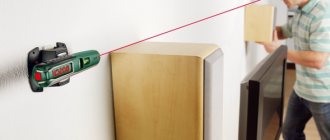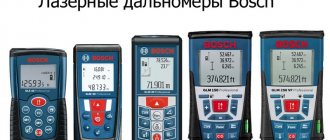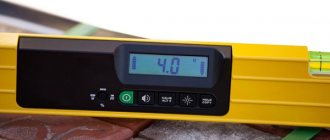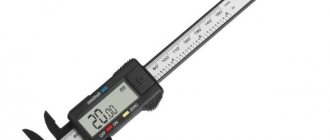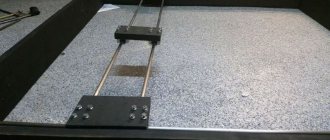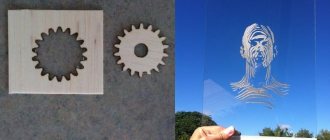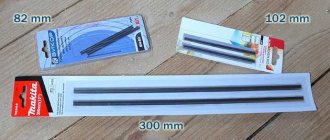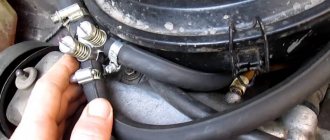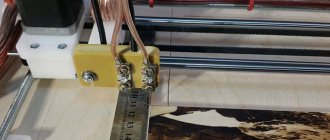Formation of the cross
Another type of level that you can create yourself is a laser cress.
This device is convenient to use when hanging cabinets in the kitchen or paintings indoors, as well as in many other cases. To create such a construction tool, you need to prepare a tripod from a video camera, a non-working player and several unnecessary disks. Creation scheme:
A cross made of laser pointers is installed on a tripod so that it begins to rotate around its axis
You can also use a drive from the player for this. It is also important to take into account that the level can freely move from one vertical to another to the desired height. The discs are glued together and attached to the old player. At the end of the work, a cross of laser pointers is attached to the disks. To install it, you need to use tape or other convenient means.
Due to the fact that the device will be in a stationary position on the tripod, it can be rotated in any direction without changing the height level. Having set all the necessary marking indicators, you can accurately set the level to any desired height in the room without regularly adjusting the device.
How to adjust the bubble level
If there is a need to adjust the construction bubble level, two tests must be carried out: vertically and horizontally. In the latter case, the procedure is simple: apply the level to the wall, and draw a line on it with a pencil along the bottom edge of the device. The extreme point of the frame is marked. The tool is rotated 180 degrees and the lower boundary is drawn again. In this case, you need to position the edge of the frame at the previously marked point.
If the fixture readings are incorrect, the two lines will be at an angle to each other. It is necessary to find and draw the bisector. After this, the level is applied to the new line and the flask is adjusted using a screw that changes the position of the holder. To achieve the correct reading, be sure to test in the opposite direction, turning the device 180 degrees.
Checking the building level along the vertical horizon is done plumb. All adjustments until the correct readings are achieved are also made by turning the bulb holder screw.
The situation is more complicated with inexpensive devices. As a rule, their flask holder does not provide for adjustment, and the cylinder with liquid itself is glued. But even such a device is easy to calibrate with due patience. You can adjust the bubble level using a Phillips screwdriver and a hammer. First you need to determine in which direction you need to move the flask. Using a screwdriver, by applying light blows, drive the upper (protruding) edge of the container down to move the bubble to the left or right. After completing such a barbaric adjustment, if the flask has survived, it is tightly filled with superglue in the holder.
Adjusting the laser beam
All adjustments are made by screwing in or unscrewing paired antagonist adjustment screws. That is, if you look at the figure below, the inclination of the laser tube and, accordingly, the entire plane to the right or left is adjusted with hexagons on the right and left, and the inclination of the tube forward and backward, respectively, with a hexagon in the middle on this side and the same screw on the other side.
Design features
The construction bubble level belongs to the category of simple, but most popular devices for repairs. Ampules with air pumped inside are installed on the bar protruding as a solid base. The ampoules have marks for measuring and determining the position of the air. When the bubble is placed in the middle, the surface is considered flat. If it moves away from the central part of the ampoule, then there is a tilt, the magnitude of which is estimated by the nature of the deflection of the air relative to the center.
The ampoule containing the air bubble contains liquid, usually industrial alcohol. The integrity of the ampoule must not be compromised.
Instruments vary in length - from several tens of centimeters to 2-3 meters or more. When working on limited surfaces, short structures are used, and in plastering work, longer ones are used. For example, for laying tiles, choose a level length of 400-1000 mm.
Long structures are susceptible to damage during transportation and operation. Therefore, shockproof structures are in demand.
Various materials are used to make the base. In the photo of the bubble level you can see products with a solid wooden or hollow aluminum and plastic base.
For metal, devices with built-in magnets are more suitable, and the presence of a ruler on one side of the bar makes marking work easier.
The accuracy of the work is ensured by several ampoules included in the design:
- the first is located on the surface of the wide part of the level and is used for horizontal alignment;
- the second is placed on a narrow and short surface for operations with a vertical orientation;
- the third is not available in all models, but its presence on the back side of a narrow plane at an angle of 45 degrees is useful for monitoring the correct operation.
The level should be applied to the wall, first leaning it against the nail. It is necessary to level the position so that the bubble shows alignment. A line is drawn on the plane of the wall. The device is turned over and the line is drawn again.
If the lines match, then you can be sure that everything is configured correctly. Otherwise, you need to make corrections:
- on the right, where the marks diverge, a mark is placed in the center between the lines;
- a level is applied to the screw, but this is done so that the other end coincides with the marking point;
- the position is fixed;
- The ampoule must be adjusted to the required position.
Useful tips for creating homemade levels using laser pointers
Despite the convenience, compactness and low price of self-made devices, they have two main disadvantages: relatively low accuracy and a short period of operation with constant use of laser emitters. The first issue is solved by setting up the device. To eliminate the second drawback, experts advise replacing the coin-cell batteries in laser pointers with an external power source
It is important to select a source with the required voltage. Usually it is 4.5 V, but it may vary for different models
When buying a laser pointer for a level device, you should carefully select its power and the color of the emitting diode. The best option is a green beam, it is less harmful to vision and is better visible even in relatively bright rooms.
By slightly increasing your budget, you can purchase a simple laser level with or without a tape measure. In this case, you can attach a ready-made device to any base, rather than a combination of a bubble level and a laser pointer.
Often these devices already have places for mounting on a tripod or tripod.
You can also use a laser tape measure as a source of laser radiation.
One more nuance: if a ready-made tripod (tripod) is used to install the laser, a useful addition to it will be a strip with markings or an ordinary metal (wooden, plastic) ruler. This will allow you to raise or lower your homemade level to a certain height without additional measurements. By the way, it is convenient to make the tripod itself from PVC pipes.
Preparing the laser level for use
The laser level allows you to take measurements and mark in space with maximum accuracy. In addition, it works very quickly, from turning on the device to receiving the results, only a couple of minutes pass.
Using a laser level is easy. But even before calibrating and setting up the device, several preliminary requirements must be met:
- The laser level should be as level as possible. Usually it is placed on a tripod or a special holder, but the device can also be placed on a table or on the floor. The main thing is that there are no sudden changes in height under the device, and that the surface does not wobble or vibrate.
- The distance from the laser level to the desired object or point in space should not exceed the maximum allowed. Before using the level, you should read the instructions; usually it contains the necessary information, as well as tips on calibration and setup. If the level is further from the plane than necessary, the laser line may not be reflected on the surface, or the device will show a large error.
- The level must be placed so that there are no obstacles in the path of the beam. The exception is situations when the laser is needed precisely in order to place beacons on it. In other cases, the line must pass freely through space to a certain point or plane.
- When using a level, it is advisable to remove all strangers from the room - both people and animals - even before calibrating and setting it.
Attention! Many laser levels are equipped with additional beam receivers that increase the range of the device.
Some models of laser levels indicate their uneven position with an audible signal.
Before turning on the unit, you need to carry out its initial setup and calibration. To do this, place the device on the selected surface and evaluate the readings of the bubble level on the body. If the droplet in the capsule is located unevenly, the level must be corrected in space.
Laser Level Calibration
To adjust the laser level, you will have to open its housing. Depending on the model, this is done in different ways. Before starting work, it is recommended to look for visual materials from people who have already dismantled a particular product. There are some useful tips.
The housing screws must be unscrewed carefully, using a smooth force. Do not use pliers to remove O-rings. The elements can be unlocked by winding a nylon thread into the slot at the junction of the parts.
The case with latches should not be disassembled with a screwdriver or force.
The fixing elements should be found with a thin knife, running it along the gap between the parts of the structure. The latches are sequentially released without excessive effort.
After disassembling the housing, the main power structure of the laser device is revealed. This is a metal part, inside of which horizontal and vertical emitters are fixed. It has fixing screws for each of the lasers, as well as adjustments for the light front. The smaller screw on the side changes the inclination in the vertical plane, the large one in front changes the angle of attack relative to the horizontal.
The laser level is adjusted according to the angle of attack using the method already described above.
- The device is installed 1 m from the wall, a mark is made on it and the opposite one.
- The device is installed to the opposite side, the tripod is adjusted until the beam hits the mark.
- The beam is directed to the opposite direction.
- The adjustment screw is turned to understand in which direction the beam is shifted.
The check is done multiple times. Marks are applied with each new test.
Advice! For such an adjustment, it is advisable to choose a room with smooth floors. If this cannot be done, it is worth constructing installation platforms for the device, the surface of which is adjusted to the horizon verified using a water level.
Similarly to the method described above, the tilt of the laser plane or line is adjusted. A mark is made on the wall, the device is rotated, and at the same time adjusted with the appropriate screw. The most difficult thing to calibrate a laser level is vertically. To do this you will need a plumb line. The laser line is directed clearly along the thread. If it is not illuminated along its entire length, you need to do the following:
- loosen the screws securing the vertical emitter;
- with some effort, rotate the laser block in the adhesive layer of the socket;
- tighten the screws;
- repeat the check.
Great accuracy cannot be achieved using this method. However, with some patience, the beam vertical will be almost perfect. Upon completion of the adjustment, you need to carefully fill with glue the areas in the socket that were deformed when turning the emitter unit manually.
How to check a laser level for accuracy
Since laser levels can provide erroneous readings even after being dropped, and for no apparent reason, it is recommended that they be tested before use in construction and repair. It does not take much time and is actually performed in the same ways as when setting up the device.
Horizontal beam accuracy check
Checking the level for horizontal accuracy is carried out using a sequential rotation method. The diagram looks like this:
- The device is placed at a short distance from the wall and a point is marked in the middle of the projection of the horizontal beam.
- The level is turned until the edge of the light line reaches the set mark.
- The coincidence of the beam and the point is assessed - if there is an upward or downward deviation, you need to calibrate the horizontal.
Warning! It is mandatory to check for accuracy even for new levels that have never been used.
Vertical beam accuracy check
There are two ways to check the level for vertical accuracy. One of them is usually used when setting up a laser - testing the plumb error. If a beam directed at a thread with a load illuminates it along its entire length, the building level works well, but if only partially, it requires calibration.
The second method requires a certain amount of effort, but is highly accurate.
- The laser is installed at the beginning of a long room, turned on and projected as a vertical line.
- Along the line, two marks are made on the floor and on the ceiling with a minimum distance of 1.5-2 m between them.
- The level is moved to the opposite end of the room and the beam is directed in the opposite direction.
Next, they check whether the new laser projection passes through the previously set marks. If there are no deviations, then calibration may not be carried out.
If the vertical in the rear projection does not pass through the starting points, the device requires adjustment
How to fix stuck buttons
If the laser level's buttons stick or stop switching, it is because they have been pressed too hard during regular use. You can carry out the repair yourself. You need to disassemble the device and solder the detached contact using a special device - a soldering iron.
Advice! To ensure that the solder does not fall off during further use, the work is performed using special solder. The main constituent substance is flux.
The laser level requires very careful handling. Therefore, if during use you find defects, you should immediately try to eliminate them. You can do minor work yourself. But in case of serious damage, contact a specialist. If you don't understand anything about this kind of repair, it will be better. Otherwise, you will not only not repair the product, but also worsen it. And buying a new one will cost much more than repairing it at a service center. In any case, it's up to you to decide. Good luck!
All plane builders have a certain error within the tolerance. Usually for cheap models it is 0.5mm/1m. For a 3-4 meter wall there is a 2-3mm run-up. And if you lay tiles in the bathroom, then at this level the discrepancy along the 4 walls will lead to a 5-6mm mismatch in the seams. More expensive models from 7-8 thousand. rubles have a smaller error, from 0.2 to 0.05mm/1m. Of course, they give a more uniform beam and a wider angle. But even a cheap level needs to be adjusted and this is very easy to do. Let’s look at the adjustment using the example of the cheapest Chinese level from Leroy, which did not even fall within the tolerance of 0.5mm/1m. There are adjustment screws at all levels. By tightening or unscrewing the screws, we change the position of the center of gravity of the pendulum and change the level setting.
It is very easy to disassemble. Unscrew the screws of the lower base. Remove the retaining ring using pliers. Can be stretched with threads. Unscrew the bottom and unscrew the body. For convenience, I screwed the bottom to one half and adjusted it that way. First of all, you need to check the level of the horizontal line. Place the device on a base or tripod. On the right side of the beam we make a level mark on the wall. Turn the device to the right so that the left edge of the beam hits this mark. If it diverges, then you need to adjust the horizon level using the side screw. After several iterations, the left and right edges of the ray should hit the same mark. The horizon is set. The second step is to adjust the plane of the beam. We take a large room, maybe a long corridor. From one wall we direct a horizontal beam to another wall. We put mark No. 1, turn the beam to the near wall and also put mark No. 2. Then we move the tripod to the opposite wall, set the height of the tripod to hit mark No. 1, then turn the device and look where the beam hits. The plane of the horizontal beam is adjusted by the front screw. After each adjustment, the marks are drawn again. The first marks are placed crookedly. Therefore, each time we make new marks and compare. We adjust until the beam hits both marks, from any wall. This way we have a guarantee that the tiles laid on opposite walls will be at the same height. The third step is to check the vertical beam. For me it was blocked and not perpendicular to the horizontal. We unscrew the screws securing the vertical sensor, loosen the glue and rotate the sensor in the desired direction. We tighten it and check it against the plumb line of the rope. It's more difficult to get here. It is difficult to turn hundredths of an angle by hand. But with some attempt you will be able to get there.
We tighten the screws and check the horizon again. I set mine with an accuracy of horizon 0.5mm/10m=0.05mm/1m, vertical 0.5mm/2.5m=0.2mm/1meter. The result was accuracy at the level of expensive devices.
Adjusting the circular level of the level
A set of actions aimed at aligning the elements of the meter makes it possible to reduce the error rate to a minimum value. To adjust a round level, perform the following steps:
- a bubble is installed in the center of the level;
- the device is turned at a right angle;
- check that the installed bubble does not move;
- if the markings are shifted, then using lifting and adjusting screws the error is eliminated.
Calibration is carried out until the displacement of the bubble element when turning is completely eliminated
Setting up the laser level
Let's move on to the question of how to set up a laser level. In principle, manufacturers write about all this in the instructions. But not everything in them is always clear.
It should be noted that the setup procedure for most devices is the same. For example, the simplest tool. As mentioned above, first you need to align the device horizontally; to do this, tighten the screws and look at the two bubble levels.
If a prism level is used to draw lines, then two lines can be applied to the plane at once: horizontal and vertical. But you can disable one of them if this is not required. Using such models, you can draw plumb lines - zenith, or install only laser points - nadir. Both features can be turned on and off as needed.
Setting up a laser level Source instrumentru.ru
Rotary levels, in addition to the above functions, have two more that can be configured. These are the scanning angle and the rotation speed of the laser beam. The only thing to note is that the rotary instrument projects the beam only in one plane. Although today modifications have already appeared, with the help of which you can additionally beat off the vertical axis at the same time.
As you can see, setting up and working with a laser level is not difficult. But if you purchase several additional accessories for it, the quality of the final result will be higher. So let's talk about these additions.
Capabilities of laser plotters Source avatars.mds.yandex.net
Additional accessories
Let's start with the ray receiver already mentioned above. An excellent addition to a laser level if work is carried out outdoors. With this device you can see the laser beam, even if the sun is shining brightly outside. In this case, the maximum operating distance specified in the passport or instructions increases two to three times. The most important thing is that you need to purchase a receiver of the same brand as the laser level. Devices of different brands, as practice shows, may not fit together and work incorrectly.
And one more thing - not all laser tools can work with receivers.
Target
This is a plastic plate on which concentric circles are drawn and horizontal and vertical rulers are applied. It is very similar to a paper shooting target, hence the name of the device.
The plate is used in cases where the distance between the planes is large. For example, 40-50 meters. And the point relative to another, located on the opposite wall, must be shifted a few centimeters above or below the horizon. It is impossible to see at such a distance whether you have reached the required place. Because the mark of a marker or pencil on the wall will simply not be visible. So they hang up a target that won’t be too difficult to hit.
Here I would like to add that some brands of laser levels are equipped with sights. It is installed on the instrument body. It has its own name - optical sight. With the help of such a device, you can hit the target accurately even from 100 m.
Laser level target Source i.simpalsmedia.com
Rail
This device is necessary when you need to apply several parallel lines at the same time, the distance between which is the same. Using the rail, you can also change the installation height of the laser tool itself, if the latter is mounted on a tripod.
Vertical adjustment
The device is attached to a holder and installed at a distance of 5 m from the wall. A plumb line 2.5 m long is attached to the wall. Turn on the level and draw the line with the plumb line. Check the deviation value. Values of 3-10 mm indicate that the meter is adjusted and the error is acceptable.
Devices with a conical and cylindrical prism to determine the correct vertical are adjusted using a plumb line
How to make a laser level with your own hands
Everyone knows that laser levels are very convenient and practical to use, but they cost a lot of money. Therefore, anyone who does not want to spend money on a factory copy of the device can try to assemble it themselves at minimal cost.
Moreover, we will try to give step-by-step instructions for assembling the device.
There are several ways to assemble a homemade laser level. The easiest way is, of course, using a regular laser pointer.
Second option
more complicated, but more advanced using a special laser module, which is freely available and costs literally several hundred rubles. Let's look at it in more detail.
First step
To make a laser level with our own hands, we need, and perhaps most importantly, the emitter itself with a cross, into which two small prisms are already built-in, responsible for projecting a horizontal and vertical line.
Second step
We need to find or create a mechanism similar to a pendulum. You can take the insides of an old joystick, as shown in the video below, or assemble it yourself from metal, plastic or wooden parts, the main thing is that all connections move freely relative to each other.
You can see the structure of the pendulum using a real laser plane builder in the photo:
Third step
Next, we install our module into the pendulum; to do this, we make a corresponding hole in the lower part of the pendulum with a diameter the same as the thickness of the module.
When our conditional compensator is assembled, we need to make weights that will help us in setting up a homemade laser level.
Fourth step
- We make two holes in the pendulum barrel, namely transverse and longitudinal, for the subsequent installation of threaded studs on both sides.
- You need to screw two or three nuts onto all four resulting ends, depending on the weight from which the pendulum will react to the overweight.
- Thus, we have a device in which we can shift the center of gravity, and, accordingly, the position of the laser lines.
Fifth step
We take a battery compartment from some old toy for 3 or 4 batteries, two will not be enough, so our homemade laser level will quickly run out, and more than four will be heavy.
It is advisable to make the compartment through a switch, it will be much more convenient. The switch can also be taken from an old unnecessary toy, fortunately this goodness is now in bulk.
Sixth step
Our entire self-assembled device needs to be installed in some kind of housing, here you can take, for example, a part of a plastic plumbing pipe with a diameter of 110 mm with a plug.
Screw the homemade compensator to the lid and insert it into the pipe, but first you need to cut apertures (windows) for laser beams.
Seventh step setup
When the entire assembly of the laser level with your own hands is completed, it needs to be configured. For precise adjustment, you can use a cheap water level, which we make two marks on the wall at a distance from each other, about 5-6 meters.
Using these two points we check the horizontal; if it passes evenly through these points, then no adjustment is required. When the laser line deviates from a given line, we use our nuts on studs, moving which will change the position of the laser plane.
The vertical line can be checked using a simple plumb line.
The advantages of such a homemade level
- – very low cost
- – projects visible laser lines onto walls rather than a dot
- – self-aligning mechanism
- – the ability to make very precise adjustments to the minimum error.
Disadvantages of a homemade laser level
- – takes a long time to install, since there are no magnets at the bottom
- – small ray scan
- - painstaking work
- – has an unfinished appearance
Where to buy a laser module
To purchase, you can use two well-known international online stores. There is nothing complicated about ordering, just follow the navigation instructions and you will have the emitter for mere pennies.
- 1. store
- 2. store
- Try it, assemble it yourself, if it doesn’t work out or you don’t have enough perseverance, you can always buy a finished product, at least from a selection of cheap laser levels.
- Recommended reviews and articles
Join our Telegram channel: @izmerilovka and the VKontakte Group, and you will be the first to know about the latest reviews of laser levels! We hope that our reviews will help you make your choice and save money.
Do-it-yourself checks and adjustments of an optical level with a compensator
A beginner can set up a laser level using the video instructions. A level with a compensator is adjusted by loosening the screw fasteners and bringing the horizontal and vertical threads into the correct position.
Following the manufacturer's instructions, adjust the meter. If these actions do not bring a positive result, then the meter is checked by specialists. Metrological centers or licensed institutes quickly adjust the device.
Level adjustment
After making a homemade device, you need to configure it correctly. When using the option with a water measuring system, there are no problems; the main adjustment requires the supporting structure.
Level adjustment
The process goes like this:
- The peg is installed into the floor by driving it in or using a mounting stand. The support is screwed in until it coincides with the bubble level in the ideal position.
- The indicator turns on and is aimed at the required surface. By carefully rotating it is possible to mark the walls.
- A self-tapping screw is screwed in in the marked area, a second place is marked nearby, after which the rail is installed.
After adjustment, the level is moved a short distance to check, if the values match, it is possible to continue working
When working with the tool, you must take precautions, wear safety glasses, and avoid direct exposure of the beam to your eyes.
Adjustment diagram
When using a homemade structure, it is important to monitor the exact markings; if the device goes wrong, you can get incorrect readings. It is necessary to monitor the vertical or horizontal position of the beam, and when using a foam component, wait until the device takes the desired position
Option No. 1 – Use a flat stand
In the first case, in order to make the device ourselves, we will need the following materials:
- a regular laser pointer (shown in the photo above; if you don’t have it lying around from previous years, you can buy it, the price is low);
- bubble building level;
- wooden peg, 1 to 1.3 meters long, 5 to 6 cm in diameter;
- a small piece of rubber;
- a sheet of plywood or board along the length of the level.
Having prepared all the materials, you can proceed to assembling a homemade device. To make it clearer to you how to make a laser level with your own hands, we provide a step-by-step guide:
Prepare the laser pointer. To make the beam brighter and clearer, break through the glass in the nozzle. To do this, cover the nozzle with cardboard and carefully break the glass. We will improve the construction level. You need to attach a pointer to the top of the instrument, for which it is better to use clamps. To be able to slightly adjust the direction of the laser beam in the future, place a piece of rubber between the level and the pointer, as shown in the drawing. Assembling the stand. First, one of the ends of the bar needs to be sharpened so that it fits well into the soil. After this, you need to assemble a reliable stand from a peg and a sheet of plywood with your own hands, screwing the sheet to the second end of the block with a self-tapping screw
We draw your attention to the fact that the plywood must be screwed strictly perpendicularly, otherwise the accuracy of the measurements will leave much to be desired.
That's all the manufacturing instructions. As you can see, it is not difficult to make a simple laser level with your own hands, but the problem is that such a homemade product cannot be installed on a hard surface, for example, a concrete screed. To solve this problem, you can also evenly screw a board from the second end of the peg, which will serve as a stand. In addition, you can make a stand, like a real level, but making a tripod will take more time.
Using such a homemade laser pointer device is not difficult. First, the stand is driven into the ground, after which it is leveled with a bubble level - the bubble should be strictly in the center. Next, you need to turn on the pointer and mark the point projected on the wall with a pencil. After this, the stand carefully rotates along its axis in a horizontal plane to the next mark. The two points are connected to each other and that’s it – the straight line on the wall is ready, you can start installing the electrical wiring!
It should be noted right away that you should not rush and start important marking work from the very beginning. First of all, you must make sure that the homemade product works correctly so that the result does not become disastrous for you. To do this, you need to adjust the homemade laser level (in other words, check the accuracy of the work).
You can make the adjustment yourself like this:
- You need to screw a self-tapping screw no more than 120 mm long into the sheet of plywood on which the level is installed. The head of the screw must coincide with the projecting line of the laser pointer, as shown in the drawing.
- Next, you need to turn on the pointer and point it at one of the walls, then make the appropriate mark with a pencil. The second self-tapping screw must not be completely screwed into this point.
- Now a profile for drywall or any other plank of light weight is carefully installed on the heads of the screws.
- A homemade laser level is installed on the profile and, if required, the bar is aligned in a horizontal plane at the base of the bubble. Alignment must be done by tilting higher/lower the edge of the profile that is located closer to the wall.
- Having leveled the profile, you need to screw a new screw into the wall, if necessary, and then remove the profile.
- In the end, the homemade level is installed on the stand and the pointer is adjusted to a new point (the screw head). Now your device is perfectly level.
With the help of such a homemade laser device, you can independently make horizontal lines to conduct hidden wiring in the house. However, you should not trust the accuracy of the measurements too much, because... This is not a professional tool and the error here is quite high.
Video review of a more complex self-regulating cross-type model
How to make a level with your own hands
How to make a laser level on a tripod
If you have a tripod and a construction bubble (“spirit level”) level, creating a device comes down to installing a tripod and attaching a level to it with a laser pointer fixed on it. The illustration shows a level with an existing groove for the pointer, but in fact the fastening is simply done using clamps, wire or even tape.
The most difficult part is the correct orientation of the laser beam. To do this, it is advisable to insert a piece of hard rubber or foam between the pointer and the surface of the level, securing it with clamps or elastic bands, as shown in the diagram.
Here 1 is a pointer, 2 is a piece of dense and moderately elastic material, 3 is clamps or elastic bands. After setting the bubble level strictly horizontally (this can be done on any flat surface), the laser pointer turns on. By cutting the insert and tightening the clamps tighter or looser, we carry out a kind of adjustment of the level (of the future). Once parallelism between the horizontal plane and the laser beam has been achieved, you can mount the resulting device on a tripod in any convenient way.
Purpose and classification of devices
The principle of operation of the device is quite simple: you need to place the laser level on the surface of the floor or wall, start it and wait for the device to create vertical or horizontal marking lines, depending on the surface used.
But such a device in construction stores costs a lot, so it’s best to figure out how to create a tripod for a level with your own hands, especially since such a procedure does not require much labor.
In appearance, the alignment looks more like a compact device that can be installed on different surfaces. The most common mounting of the device is carried out using the following settings:
- tripod stand;
- magnetic mounts;
- bracket;
- special fastening belts.
In addition to the principle of fastening, construction devices differ from each other in the features of the projection of the laser beam onto the wall surface and its direction. Devices that are used to determine direction create a projection on the surface in the form of a point. The levels that delimit the plane include in their structure a special optics system that turns the beam into the plane itself. Today, experienced builders identify the following types of laser systems:
- A rotating device that can rotate around its axis, while forming clear outlines. This device has a durable body, well protected from external factors. This product is often used for various construction works: from pouring the floor to creating a ceiling.
- A positioning apparatus, which includes two radiation sources, helps to project the plane visible to the builder. This device is most often used to furnish a room.
- A self-leveling device is a level that includes a special pendulum that can emit about five rays. Such a device may also have a cross-type sight.
How to set up a level for work after a fall
If the laser level is lost when the meter is dropped, you can adjust it using bubbles or a thread mesh. Inconsistency between indicators requires adjustment.
Attention! Experts recommend checking and adjusting the device daily to avoid distorted markings in the room.
The device is subject to metrological certification annually. If the level has been dropped or subjected to other mechanical impacts, the alignment is performed out of turn.
Specialized stores carry out mandatory pre-sale inspection and adjustment of the device. Adjustment is performed using various methods depending on the type of device. Self-calibration is done using:
- shifting the center of gravity and simultaneous rotation of the screws;
- installation of a flat plane of the front and side sides;
- Plumb adjustment of the meter.
Checking the device for correct installation
Much depends on the accuracy of the measurement results carried out by the device. If the plane for laying tiles is knocked off, then the evenness of the installation of the tool will affect the interior design. If the plane is checked during the construction of a house, then the installation of the level will affect the quality of construction and the reliability of this structure.
Each device (depending on the model and its cost) has corresponding error indicators
The permissible error values are indicated directly in the instructions for the equipment, which should be taken into account when purchasing a tool. Acceptable error values are indicated in the appropriate units of measurement, which are mm/m
Errors are not so important when using the device indoors, but they are extremely necessary when carrying out external work on beating a plane and leveling walls.
The error is one of the main technical parameters of the instrument, and some manufacturers indicate the magnitude of deviations not only in the technical documentation, but also on the body of the device. If the magnitude of the error is known, then the permissible deviation from the norm can be calculated. If the deviation value is higher than permissible, it is recommended to use a level with a smaller error value.
It doesn't matter if the laser level is being used to level a floor, wall or ceiling, but before taking the corresponding measurements, you will need to check the accuracy. The check is quite simple, for which the following steps are performed:
- First you need to put marks on two parallel walls in the room, according to which the check will be carried out
- One mark is placed on the wall that is closer to the device (at a distance of up to 1 meter)
- The second mark is placed on the opposite wall, located at a distance of more than 2 meters. The further the distance between the walls, the more accurately device deviations can be identified
- After marking with a marker or pencil on the wall, you need to move the level directly to the wall, which was further from the level
- Align the directional laser beam with the point that was marked. Then project the beam onto the opposite side and see if it matches the mark
- If it matches, then the instrument has an insignificant error (note that the greater the distance between the walls, the higher the error, and the smaller the gap between them, the correspondingly lower the error)
- If the laser beam does not coincide with the mark, then there is an error, and its magnitude is quite high. There are special adjustment screws in the device body, which also allow you to adjust the level, reducing deviations from the norm
Before using a laser level to level walls, you need to make sure that there are no large deviations, otherwise the indicators will not correspond to reality. Below is a video instruction and training on how to properly check the level for measurement accuracy.
https://youtube.com/watch?v=ffrWqniqrfs%3F
DIY laser level repair
The level may be subject to shaking and falling. This affects the accuracy of the work. A large error appears or the laser beam disappears completely. You can disassemble the device yourself and inspect it for visible defects. If there are none, make adjustments.
- Remove the batteries or battery. Unscrew the mounting bolts. Carefully separate the housing parts.
The level wiring is very thin
Shift all planes to the left
Horizontal line shifted
Hexagons and holes for adjustment
Arc instead of line
Adjustment screws for arc formation
How to make a laser level with your own hands
Before you start assembling a homemade level, you must clearly decide why you need it and in what situations it will be used. If you are not going to measure something very often, then we recommend not making it. But, if you are planning a large construction project, then you won’t be able to do without it. To make a laser level with your own hands, you need to collect the following materials:
- Regular building level.
- A piece of plywood or board.
- A laser pointer, you can buy it in any children's store, the price is pretty cheap.
- A peg with a round diameter d=5-6 cm, its length should be 1 or 1.3 m, if desired, you can take any convenient holder.
- A small piece of foam rubber.
Step-by-step instructions will help you understand the question of how to make a laser level with your own hands and help you avoid making mistakes. Learn how to make a mobile projector.
- We take a laser pointer and break through the glass, so the beam will be clear and bright.
- We are improving the building level; to do this, you need to attach a pointer to the top. You can use clamps or other devices for fastening. But, remember, the pointer must be adjusted in the future; to do this, we place a small piece of rubber between the pointer and the level, this is how it looks in the photo.
- Let's put together a homemade product. Initially, one piece of the block needs to be sharpened a little so that it fits into the soil; if you are going to use a homemade laser pointer, then try to make a special mount. Using a peg and a piece of plywood, we assemble the stand with our own hands; the sheet can be screwed to the block with self-tapping screws. We screw the sheet strictly in a perpendicular position, this is the only way to achieve normal measurement accuracy.
Tilt adjustment
Do-it-yourself laser level adjustment to check the 900 angle is performed between two planes. There are two methods for determining the correct parameters:
- for adaptation with a barrel-shaped plane builder;
- with cone prism.
The first type of device has a tribrach or rotating base. The device is installed between the walls at a distance of 2 m and marks are applied on vertical surfaces.
Then the meter head is carefully turned clockwise by 900 so as not to move the device. The previously applied marks are combined with the readings of the laser pointer. This procedure is done four times for each side.
With perfect alignment of the marks and the beam, the correct angle value of 900 is obtained
The second technique is suitable for a cone prism device because the head is not centered when rotated. The device is placed on the floor and two marks are placed. The first is marked close to the level, and the second at a distance of 2 m. The body is turned 900 and the marks are aligned. This is done four more times for each surface.
